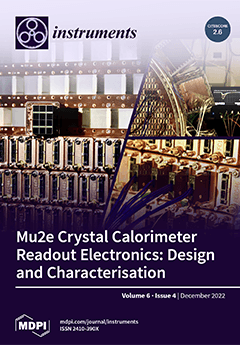Open AccessArticle
Polarimetry for 3He Ion Beams from Laser–Plasma Interactions
by
Chuan Zheng, Pavel Fedorets, Ralf Engels, Chrysovalantis Kannis, Ilhan Engin, Sören Möller, Robert Swaczyna, Herbert Feilbach, Harald Glückler, Manfred Lennartz, Heinz Pfeifer, Johannes Pfennings, Claus M. Schneider, Norbert Schnitzler, Helmut Soltner and Markus Büscher
Cited by 2 | Viewed by 1773
Abstract
We present a compact polarimeter for
He ions with special emphasis on the analysis of short-pulsed beams accelerated during laser–plasma interactions. We discuss the specific boundary conditions for the polarimeter, such as the properties of laser-driven ion beams, the selection of the
[...] Read more.
We present a compact polarimeter for
He ions with special emphasis on the analysis of short-pulsed beams accelerated during laser–plasma interactions. We discuss the specific boundary conditions for the polarimeter, such as the properties of laser-driven ion beams, the selection of the polarization-sensitive reaction in the polarimeter, the representation of the analyzing-power contour map, the choice of the detector material used for particle identification, as well as the production procedure of the required deuterated foil-targets. The assembled polarimeter has been tested using a tandem accelerator delivering unpolarized
He ion beams, demonstrating good performance in the few-MeV range. The statistical accuracy and the deduced figure-of-merit of the polarimetry are discussed, including the count-rate requirement and the lower limit of accuracy for beam-polarization measurements at a laser-based ion source.
Full article
►▼
Show Figures




